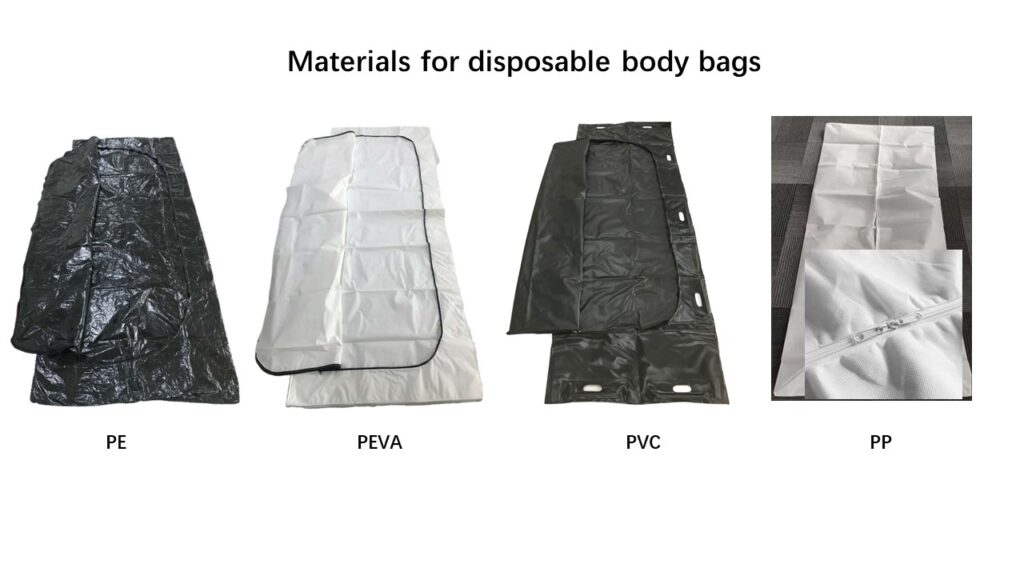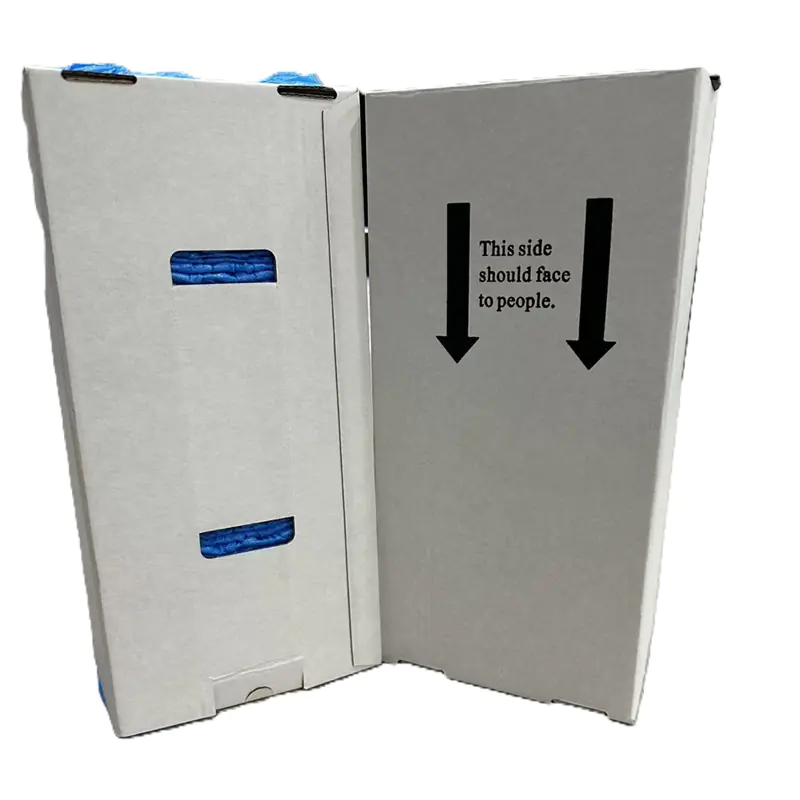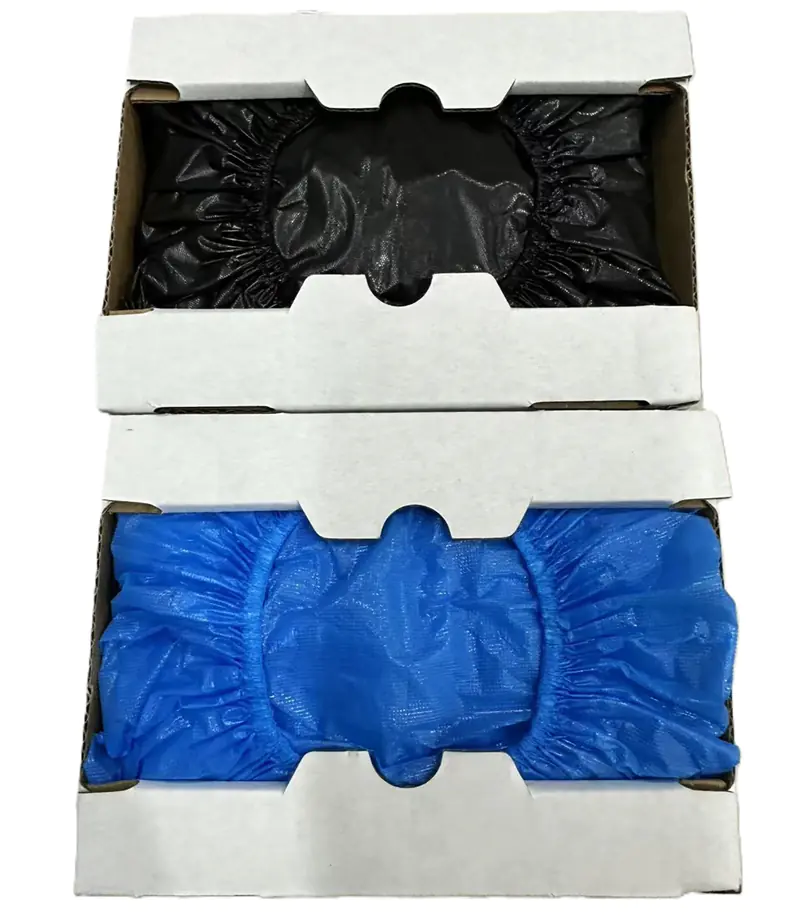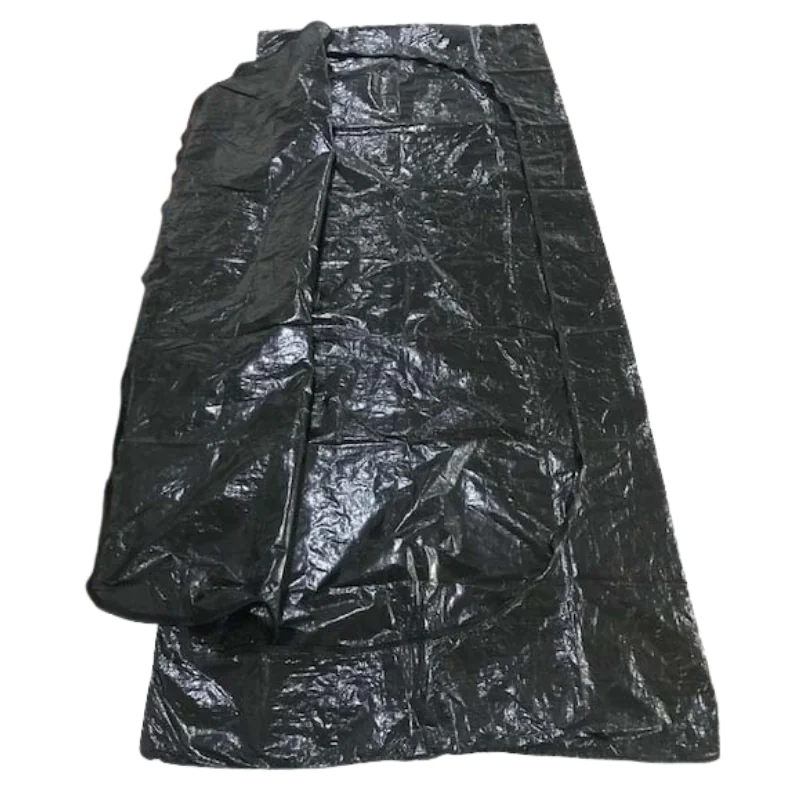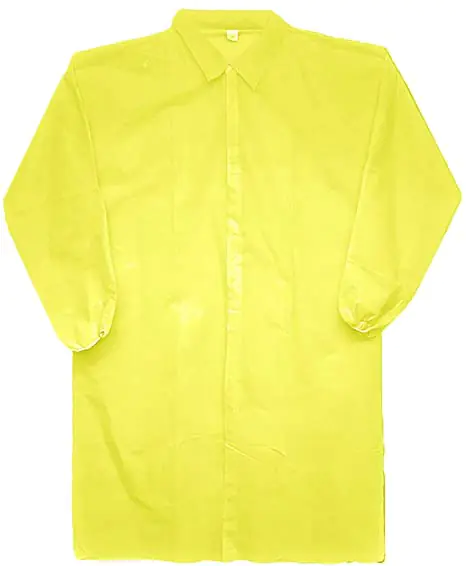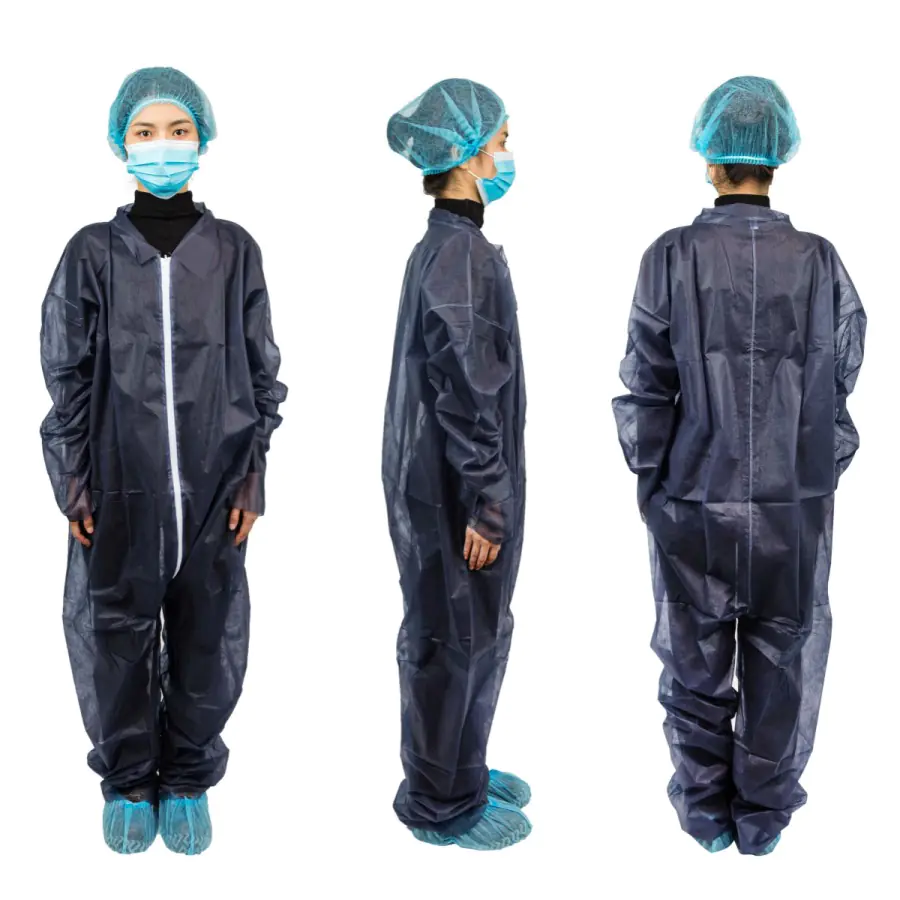Choosing the right body bag is very important. It’s about showing respect for the person who has passed away. It’s also about keeping workers safe. Body bags, also called corpse bags ou cadaver pouches, are used by hospitals, funeral homes, and emergency services. The material they are made from makes a big difference. Two common choices for adult body bags are PEVA e nonwoven fabrics. Let’s look at each one to understand them better. We want to see which material might be best for different needs.
What are Body Bags For?
Before we compare materials, let’s remember why body bags are used:
- Respect: They provide a dignified way to handle and transport someone who has died.
- Containment: They help contain fluids and prevent the spread of germs, protecting healthcare workers and others.
- Transport: They make it easier and safer to move the deceased. You can find different types, like a basic Hospital body bag.
The material needs to be strong enough and safe enough for these important jobs.
Material Option 1: PEVA (Polyethylene Vinyl Acetate)
PEVA is a type of plástico. It’s becoming more popular for body bags for a few key reasons.
- What is PEVA? It’s a plastic made without chlorine. Think of it like a safer cousin to PVC plastic.
Why Choose PEVA?
- Good for the Earth (Chlorine-Free): Because PEVA doesn’t have chlorine, it’s often seen as better for the environment, especially if the bag might be cremated (burned). Burning chlorine can release harmful fumes . This makes Disposable body bags PEVA a thoughtful choice.
- Keeps Fluids In: PEVA material is naturally à prova de água. It does a good job of stopping leaks, which is crucial for safety and hygiene.
- Flexible: PEVA is usually quite flexible, even when it gets cold. This makes it easier to handle.
- Often Costs Less: PEVA bags can sometimes be cheaper than some nonwoven options, making them good for budgets.
Things to Think About with PEVA:
- Strength: While waterproof, some PEVA bags might not be as strong or resistant to tearing as heavy-duty nonwoven bags. This depends on how thick the PEVA plastic is.
Best Uses for PEVA:
PEVA body bags are often a great choice for:
- Standard situations where extreme strength isn’t the top need.
- Cases where cremation is planned.
- Short-term storage or transport.
- Organizations looking for a cost-effective, chlorine-free option.
Material Option 2: Nonwoven Fabrics
Nonwoven fabrics are different from materials like cotton or polyester that are woven or knitted together. Instead, nonwoven fabrics are made from fibers pressed or bonded together. Think of how felt is made. There are several types used for body bags.
- What are Nonwovens? Sheets of material made from fibers stuck together chemically, mechanically, or with heat.
Common Types of Nonwovens for Body Bags:
- PP (Polypropylene): This is a basic, lightweight nonwoven material. It’s not very waterproof on its own but is often used for light-duty bags or combined with other layers.
- SMS (Spunbond-Meltblown-Spunbond): This is a multi-layer fabric. The middle ‘meltblown’ layer acts like a filter, making SMS bags stronger and more resistant to fluids than plain PP. It can also let some air pass through (be breathable) while blocking liquids.
- PP+PE (Polypropylene Coated with Polyethylene): This combines the nonwoven PP fabric with a layer of waterproof PE plastic. This makes the bag very strong and creates an excellent barrier against fluids.
Why Choose Nonwoven Fabrics?
- Strength and Durability: Nonwoven fabrics, especially SMS and PP+PE, are often stronger and more tear-resistant than basic PEVA bags. This is important for heavier bodies or rougher handling. Some are designed as a Heavy duty post mortem body bag.
- Fluid Barrier: SMS offers good fluid resistance, and PP+PE offers excellent waterproof protection.
- Breathability (SMS): In some situations, a little breathability might be wanted, which SMS can provide while still blocking liquids.
Things to Think About with Nonwovens:
- Cost: Nonwoven bags, particularly stronger ones like SMS or PP+PE, can cost more than basic PEVA bags.
- Environment: While many nonwovens are chlorine-free, always check if environmental impact during disposal is a major concern. Plain PP is less of a fluid barrier.
Best Uses for Nonwoven Fabrics:
Nonwoven body bags, especially SMS or PP+PE, are often preferred for:
- Situations needing extra strength or durability.
- Longer-term storage or transport.
- Cases requiring a very high level of fluid containment (PP+PE).
- Meeting specific regulations that require stronger materials. Many designs include useful features like a cadaver pouch with handles.
PEVA vs. Nonwoven: Quick Comparison
Here’s a simple table to show the main differences:
| Caraterística | PEVA | Nonwoven (PP+PE Example) |
|---|---|---|
| Material Type | Plastic (Chlorine-Free) | Fabric + Plastic Coating |
| Waterproof? | Yes | Yes (Excellent barrier) |
| Strength | Good, depends on thickness | Very Good to Excellent |
| Tear Risk | Can be higher than heavy nonwovens | Generally Lower |
| Eco Factor | Good (Chlorine-free) | Good (Often chlorine-free) |
| Flexibilidade | Good, often good in cold | Good |
| Custo | Often Lower | Can be Higher |
| Best For | Standard use, cremation, budget needs | Heavy duty, long transport, strong barrier |
How to Choose the Right Material
When deciding between PEVA and nonwoven fabrics, think about these questions:
- How strong does it need to be? (Consider weight and handling)
- How important is fluid containment? (Is leakage a high risk?)
- Will it be used for short-term or long-term?
- Is the body bag likely to be cremated? (PEVA is good here)
- What is the budget?
- Are there specific rules or regulations to follow?
Conclusion: Matching the Material to the Need
Both PEVA and nonwoven fabrics can make good quality adult body bags. PEVA is a great choice for many standard situations, offering a waterproof, chlorine-free, and often lower-cost option. Nonwoven fabrics, especially SMS or PP+PE, provide extra strength, durability, and sometimes specific barrier properties needed for more demanding situations, though they might cost more.
The best choice depends on carefully thinking about the specific needs of the situation – balancing cost, strength, fluid protection, and environmental concerns. Making the right choice helps ensure the deceased is treated with dignity and respect, while also keeping handlers safe.

